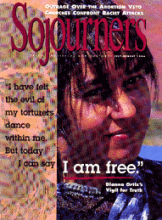The task of responding with integrity to everyday violence is about as vexing as the violence itself is ubiquitous. The result is by now well known: Most throw up their hands and embrace what Robert Beck calls the myth of constructive violence. They simply respond to violence with more of the same, believing that it solves deeply entrenched social problems.
In the opening chapter of Nonviolent Story, Beck patiently explores the functions of this myth via popular narratives, using the Western stories of the prolific author Louis LAmour as a literary benchmark. This is important work, not least because narratives influence our view of the worldand therefore our livesin obscure yet significant ways. Beck phrases this relationship more deftly: While life offers dilemmas for narrative to work through, narrative offers scripts for life. The gospel of Marks narrative script for a nonviolent life is what this gem of a book is all about.
Narrative analysis identifies and interprets the structure of the plot, as well as the fluctuating relations and fortunes of the main characters, to uncover other, often less obvious, meanings of a story. Marks gospel is shown to follow the plot dynamic of challenge/response between Jesus as protagonist, and the Judean authorities as antagonist. Becks interpretation of the gospels plot structure highlights a Jesus who aggressively issues challenges and resists established power, even while creatively interrupting the violence cycle by steadfastly refusing to use it.
Read the Full Article
